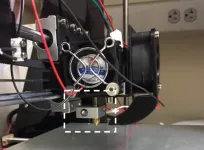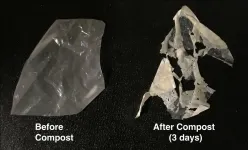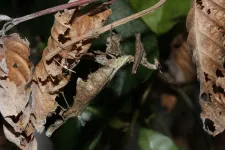Researchers from the National Cheng Kung University Hospital in Taiwan combined the results of past studies to understand the effect that listening to music can have on the quality of older adults' sleep. Their work suggests that:
- Older adults (ages 60 and up) living at home sleep better when they listen to music for 30 minutes to one hour at bedtime.
- Calm music improves older adults' sleep quality better than rhythmic music does.
- Older adults should listen to music for more than four weeks to see the most benefit from listening to music.
Why Older Adults Have Trouble Getting a Good Night's Sleep
As we age, our sleep cycles change and make a good night's sleep harder to achieve. What does it really mean to get a good night's sleep? If you wake up rested and ready to start your day, you probably slept deeply the night before. But if you're tired during the day, need coffee to keep you going, or wake up several times during the night, you may not be getting the deep sleep you need. [1] According to the National Institute on Aging, older adults need seven to nine hours of sleep each night.[2]
But studies have shown that 40 to 70 percent of older adults have sleep problems and over 40 percent have insomnia, meaning they wake up often during the night or too early in the morning. Sleep problems can make you feel irritable and depressed, can cause memory problems, and can even lead to falls or accidents.
How the Researchers Studied the Effect of Music on Older Adults' Quality of Sleep
For their study, the researchers searched for past studies that tested the effect of listening to music on older adults with sleep problems who live at home. They looked at five studies with 288 participants. Half of these people listened to music; the other half got the usual or no treatment for their sleep problems. People who were treated with music listened to either calming or rhythmic music for 30 minutes to one hour, over a period ranging from two days to three months. (Calming music has slow tempo of 60 to 80 beats per minute and a smooth melody, while rhythmic music is faster and louder.) All participants answered questions about how well they thought they were sleeping. Each participant ended up with a score between 0 and 21 for the quality of their sleep.
The researchers looked at the difference in average scores for:
- people who listened to music compared to people who did not listen to music;
- people who listened to calm music compared to people who listened to rhythmic music;
- and people who listened to music for less than four weeks compared to people who listened to music for more than four weeks.
What the Researchers Learned
Listening to calming music at bedtime improved sleep quality in older adults, and calming music was much better at improving sleep quality than rhythmic music. The researchers said that calming music may improve sleep by slowing your heart rate and breathing, and lowering your blood pressure.[3] This, in turn helps lower your levels of stress and anxiety.
Researchers also learned that listening to music for longer than four weeks is better at improving sleep quality than listening to music for a shorter length of time.
Limits of the Study
- Researchers only looked at studies published in English and Chinese, meaning they may have missed studies in other languages on the effect of listening to music on sleep in older adults.
- Results may not apply to older adults with Alzheimer's disease or Parkinson's disease.
- In the studies researchers used, people who listened to music received more attention from researchers than did people who got standard or no treatment for their sleep problems. This means that sleep improvements in the music therapy group could be due to that extra attention.
- Since the different studies used different kinds of music, researchers could not single out which type of calming music improved sleep the most.
- All of the people in the study had similar kinds of sleep problems. This means listening to music may not help people with other kinds of sleep problems.
What this Study Means for You
If you're having trouble sleeping, listening to music can be a safe, effective, and easy way to help you fall and stay asleep. It may also reduce your need for medication to help you sleep.
INFORMATION:
This summary is from "Effect of music therapy on improving sleep quality in older adults: A systematic review and meta-analysis." It appears online ahead of print in the Journal of the American Geriatrics Society. The study authors are Chia-Te Chen, NP, MS; Yen-Chin Chen, RN, PhD; Heng-Hsin Tung RN, FNP, PhD; Ching-Ju, Fang, MLIS; Jiun-Ling Wang, MD; Nai-Ying Ko RN, PhD; and Ying-Ju Chang, RN, PhD.
[1] https://www.sleepfoundation.org/how-sleep-works/what-makes-good-night-sleep
[2] https://www.nia.nih.gov/health/good-nights-sleep
[3] https://www.ncbi.nlm.nih.gov/pmc/articles/PMC3011183/
About the Health in Aging Foundation
This research summary was developed as a public education tool by the Health in Aging Foundation. The Foundation is a national non-profit established in 1999 by the American Geriatrics Society to bring the knowledge and expertise of geriatrics healthcare professionals to the public. We are committed to ensuring that people are empowered to advocate for high-quality care by providing them with trustworthy information and reliable resources. Last year, we reached nearly 1 million people with our resources through HealthinAging.org. We also help nurture current and future geriatrics leaders by supporting opportunities to attend educational events and increase exposure to principles of excellence on caring for older adults. For more information or to support the Foundation's work, visit http://www.HealthinAgingFoundation.org.
About the Journal of the American Geriatrics Society
Included in more than 9,000 library collections around the world, the Journal of the American Geriatrics Society (JAGS) highlights emerging insights on principles of aging, approaches to older patients, geriatric syndromes, geriatric psychiatry, and geriatric diseases and disorders. First published in 1953, JAGS is now one of the oldest and most impactful publications on gerontology and geriatrics, according to ISI Journal Citation Reports®. Visit wileyonlinelibrary.com/journal/JGS for more details.
About the American Geriatrics Society
Founded in 1942, the American Geriatrics Society (AGS) is a nationwide, not-for-profit society of geriatrics healthcare professionals that has--for more 75 years--worked to improve the health, independence, and quality of life of older people. Its nearly 6,000 members include geriatricians, geriatric nurses, social workers, family practitioners, physician assistants, pharmacists, and internists. The Society provides leadership to healthcare professionals, policymakers, and the public by implementing and advocating for programs in patient care, research, professional and public education, and public policy. For more information, visit END






